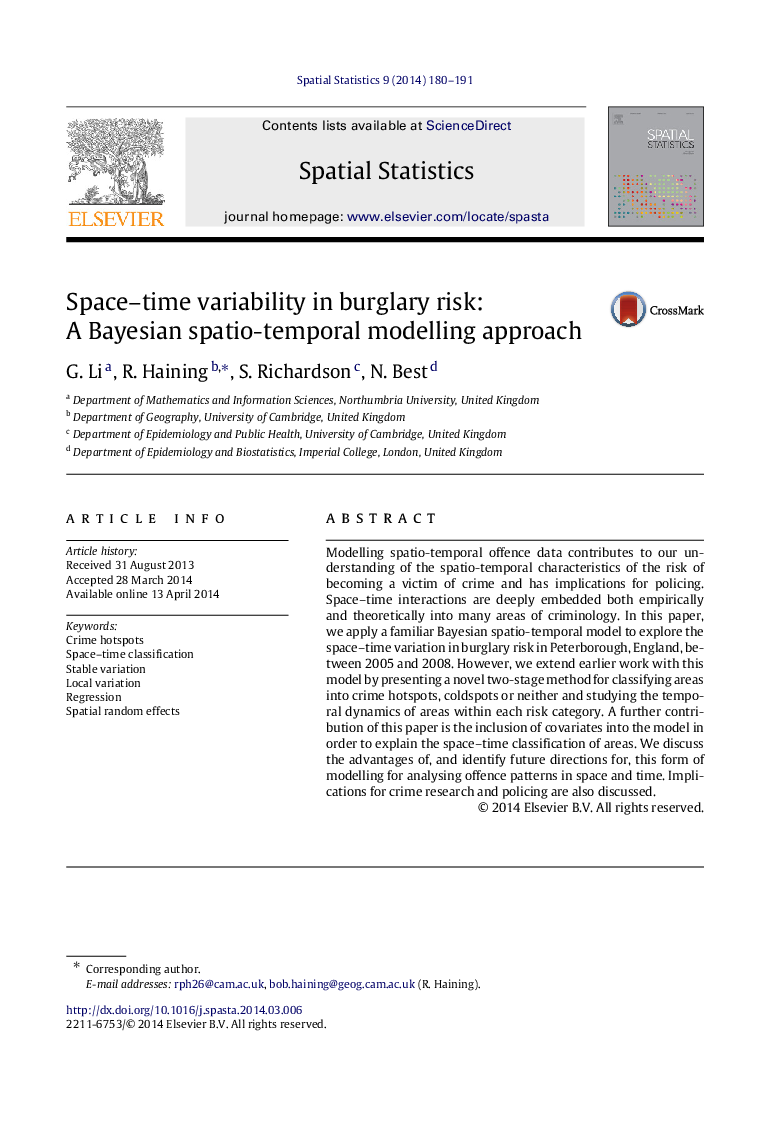| Article ID | Journal | Published Year | Pages | File Type |
|---|---|---|---|---|
| 1064606 | Spatial Statistics | 2014 | 12 Pages |
Modelling spatio-temporal offence data contributes to our understanding of the spatio-temporal characteristics of the risk of becoming a victim of crime and has implications for policing. Space–time interactions are deeply embedded both empirically and theoretically into many areas of criminology. In this paper, we apply a familiar Bayesian spatio-temporal model to explore the space–time variation in burglary risk in Peterborough, England, between 2005 and 2008. However, we extend earlier work with this model by presenting a novel two-stage method for classifying areas into crime hotspots, coldspots or neither and studying the temporal dynamics of areas within each risk category. A further contribution of this paper is the inclusion of covariates into the model in order to explain the space–time classification of areas. We discuss the advantages of, and identify future directions for, this form of modelling for analysing offence patterns in space and time. Implications for crime research and policing are also discussed.
